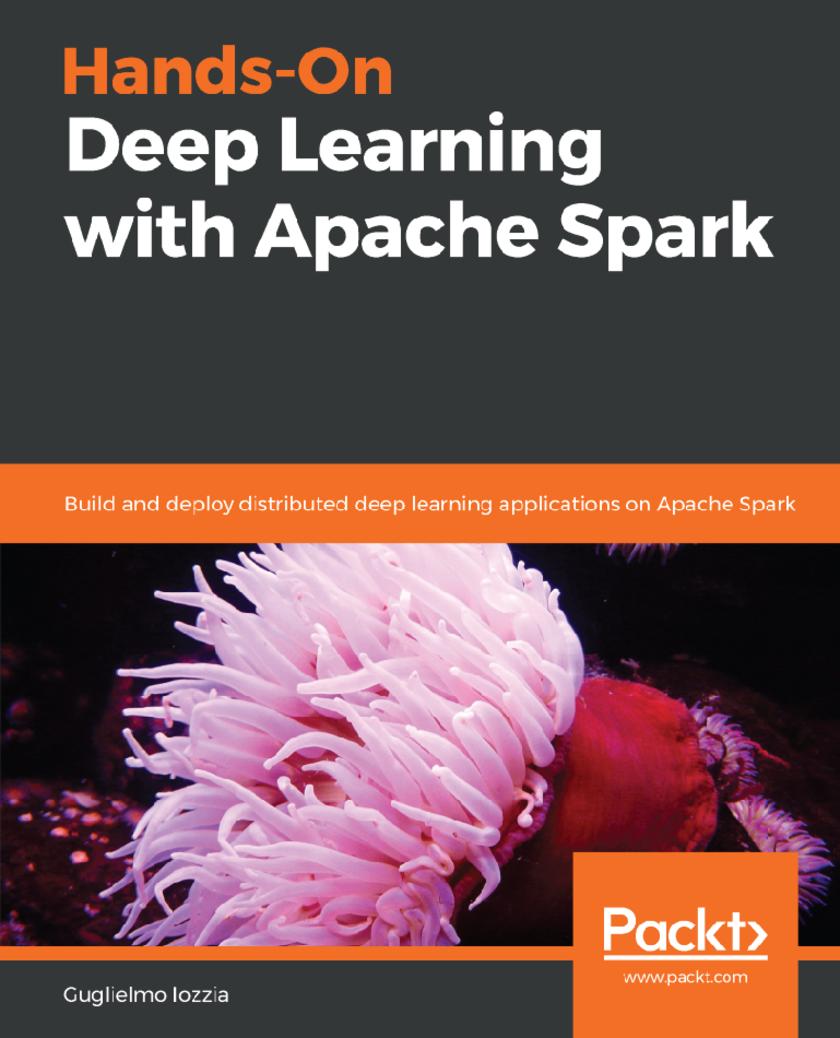
Hands-On Deep Learning with Apache Spark
¥81.74
Speed up the design and implementation of deep learning solutions using Apache Spark Key Features * Explore the world of distributed deep learning with Apache Spark * Train neural networks with deep learning libraries such as BigDL and TensorFlow * Develop Spark deep learning applications to intelligently handle large and complex datasets Book Description Deep learning is a subset of machine learning where datasets with several layers of complexity can be processed. Hands-On Deep Learning with Apache Spark addresses the sheer complexity of technical and analytical parts and the speed at which deep learning solutions can be implemented on Apache Spark. The book starts with the fundamentals of Apache Spark and deep learning. You will set up Spark for deep learning, learn principles of distributed modeling, and understand different types of neural nets. You will then implement deep learning models, such as convolutional neural networks (CNNs), recurrent neural networks (RNNs), and long short-term memory (LSTM) on Spark. As you progress through the book, you will gain hands-on experience of what it takes to understand the complex datasets you are dealing with. During the course of this book, you will use popular deep learning frameworks, such as TensorFlow, Deeplearning4j, and Keras to train your distributed models. By the end of this book, you'll have gained experience with the implementation of your models on a variety of use cases. What you will learn * Understand the basics of deep learning * Set up Apache Spark for deep learning * Understand the principles of distribution modeling and different types of neural networks * Obtain an understanding of deep learning algorithms * Discover textual analysis and deep learning with Spark * Use popular deep learning frameworks, such as Deeplearning4j, TensorFlow, and Keras * Explore popular deep learning algorithms Who this book is for If you are a Scala developer, data scientist, or data analyst who wants to learn how to use Spark for implementing efficient deep learning models, Hands-On Deep Learning with Apache Spark is for you. Knowledge of the core machine learning concepts and some exposure to Spark will be helpful.
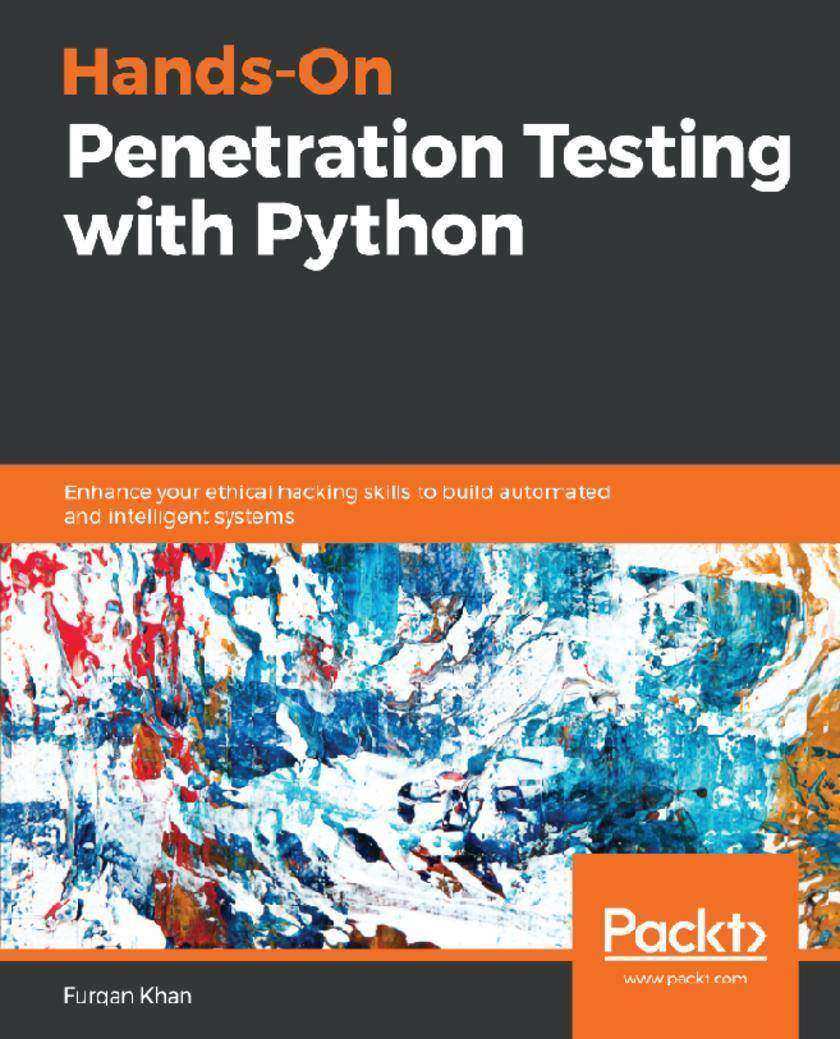
Hands-On Penetration Testing with Python
¥73.02
Implement defensive techniques in your ecosystem successfully with Python Key Features * Identify and expose vulnerabilities in your infrastructure with Python * Learn custom exploit development . * Make robust and powerful cybersecurity tools with Python Book Description With the current technological and infrastructural shift, penetration testing is no longer a process-oriented activity. Modern-day penetration testing demands lots of automation and innovation; the only language that dominates all its peers is Python. Given the huge number of tools written in Python, and its popularity in the penetration testing space, this language has always been the first choice for penetration testers. Hands-On Penetration Testing with Python walks you through advanced Python programming constructs. Once you are familiar with the core concepts, you’ll explore the advanced uses of Python in the domain of penetration testing and optimization. You’ll then move on to understanding how Python, data science, and the cybersecurity ecosystem communicate with one another. In the concluding chapters, you’ll study exploit development, reverse engineering, and cybersecurity use cases that can be automated with Python. By the end of this book, you’ll have acquired adequate skills to leverage Python as a helpful tool to pentest and secure infrastructure, while also creating your own custom exploits. What you will learn * Get to grips with Custom vulnerability scanner development * Familiarize yourself with web application scanning automation and exploit development * Walk through day-to-day cybersecurity scenarios that can be automated with Python * Discover enterprise-or organization-specific use cases and threat-hunting automation * Understand reverse engineering, fuzzing, buffer overflows , key-logger development, and exploit development for buffer overflows. * Understand web scraping in Python and use it for processing web responses * Explore Security Operations Centre (SOC) use cases * Get to understand Data Science, Python, and cybersecurity all under one hood Who this book is for If you are a security consultant , developer or a cyber security enthusiast with little or no knowledge of Python and want in-depth insight into how the pen-testing ecosystem and python combine to create offensive tools , exploits , automate cyber security use-cases and much more then this book is for you. Hands-On Penetration Testing with Python guides you through the advanced uses of Python for cybersecurity and pen-testing, helping you to better understand security loopholes within your infrastructure .
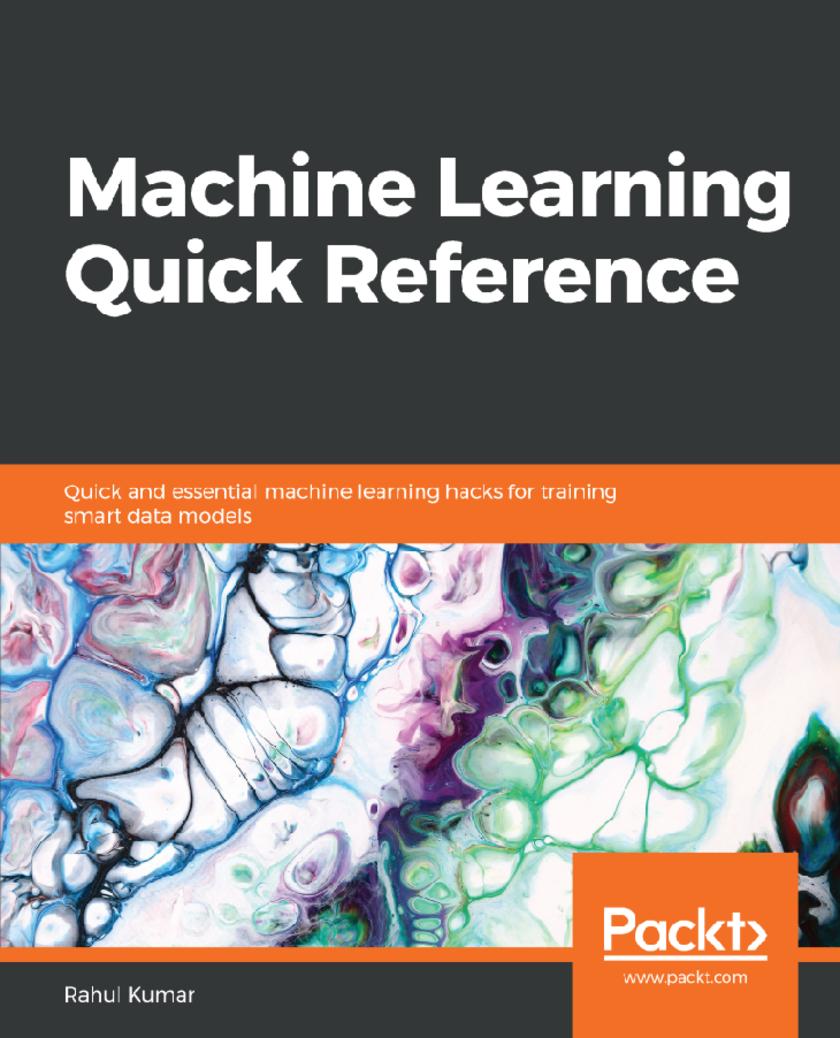
Machine Learning Quick Reference
¥54.49
Your hands-on reference guide to developing, training, and optimizing your machine learning models Key Features * Your guide to learning efficient machine learning processes from scratch * Explore expert techniques and hacks for a variety of machine learning concepts * Write effective code in R, Python, Scala, and Spark to solve all your machine learning problems Book Description Machine learning makes it possible to learn about the unknowns and gain hidden insights into your datasets by mastering many tools and techniques. This book guides you to do just that in a very compact manner. After giving a quick overview of what machine learning is all about, Machine Learning Quick Reference jumps right into its core algorithms and demonstrates how they can be applied to real-world scenarios. From model evaluation to optimizing their performance, this book will introduce you to the best practices in machine learning. Furthermore, you will also look at the more advanced aspects such as training neural networks and work with different kinds of data, such as text, time-series, and sequential data. Advanced methods and techniques such as causal inference, deep Gaussian processes, and more are also covered. By the end of this book, you will be able to train fast, accurate machine learning models at your fingertips, which you can easily use as a point of reference. What you will learn * Get a quick rundown of model selection, statistical modeling, and cross-validation * Choose the best machine learning algorithm to solve your problem * Explore kernel learning, neural networks, and time-series analysis * Train deep learning models and optimize them for maximum performance * Briefly cover Bayesian techniques and sentiment analysis in your NLP solution * Implement probabilistic graphical models and causal inferences * Measure and optimize the performance of your machine learning models Who this book is for If you’re a machine learning practitioner, data scientist, machine learning developer, or engineer, this book will serve as a reference point in building machine learning solutions. You will also find this book useful if you’re an intermediate machine learning developer or data scientist looking for a quick, handy reference to all the concepts of machine learning. You’ll need some exposure to machine learning to get the best out of this book.
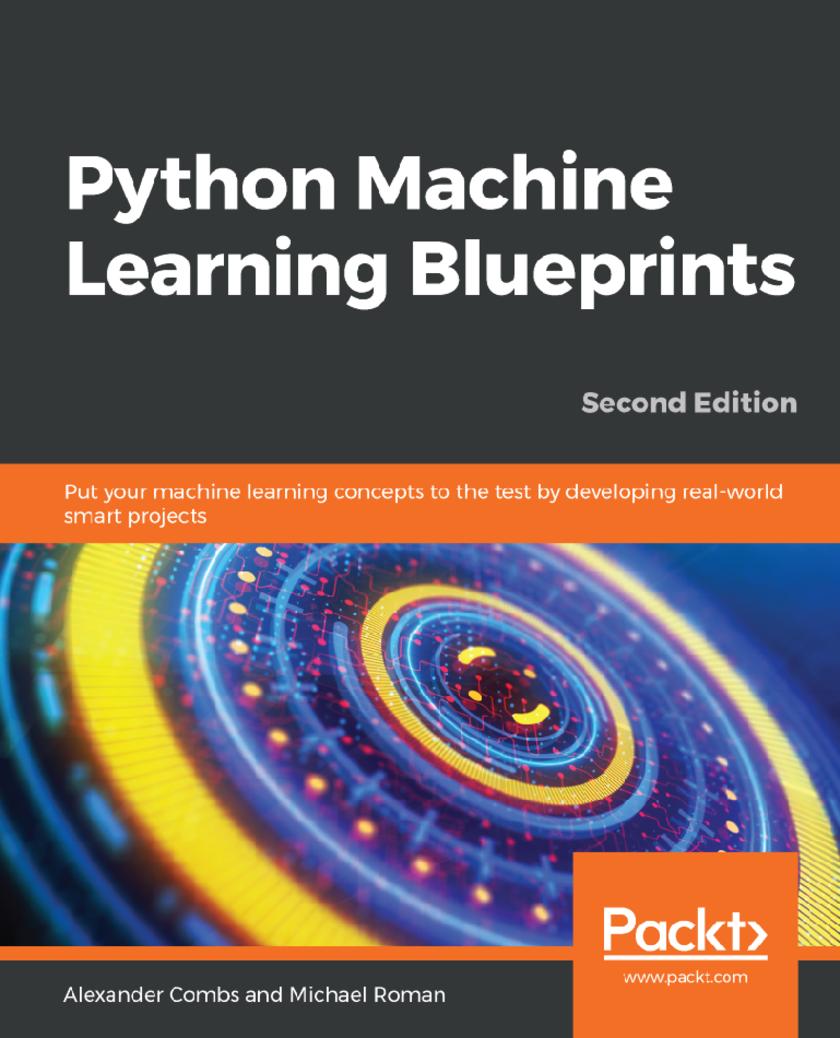
Python Machine Learning Blueprints
¥81.74
Discover a project-based approach to mastering machine learning concepts by applying them to everyday problems using libraries such as scikit-learn, TensorFlow, and Keras Key Features * Get to grips with Python's machine learning libraries including scikit-learn, TensorFlow, and Keras * Implement advanced concepts and popular machine learning algorithms in real-world projects * Build analytics, computer vision, and neural network projects Book Description Machine learning is transforming the way we understand and interact with the world around us. This book is the perfect guide for you to put your knowledge and skills into practice and use the Python ecosystem to cover key domains in machine learning. This second edition covers a range of libraries from the Python ecosystem, including TensorFlow and Keras, to help you implement real-world machine learning projects. The book begins by giving you an overview of machine learning with Python. With the help of complex datasets and optimized techniques, you’ll go on to understand how to apply advanced concepts and popular machine learning algorithms to real-world projects. Next, you’ll cover projects from domains such as predictive analytics to analyze the stock market and recommendation systems for GitHub repositories. In addition to this, you’ll also work on projects from the NLP domain to create a custom news feed using frameworks such as scikit-learn, TensorFlow, and Keras. Following this, you’ll learn how to build an advanced chatbot, and scale things up using PySpark. In the concluding chapters, you can look forward to exciting insights into deep learning and you'll even create an application using computer vision and neural networks. By the end of this book, you’ll be able to analyze data seamlessly and make a powerful impact through your projects. What you will learn * Understand the Python data science stack and commonly used algorithms * Build a model to forecast the performance of an Initial Public Offering (IPO) over an initial discrete trading window * Understand NLP concepts by creating a custom news feed * Create applications that will recommend GitHub repositories based on ones you’ve starred, watched, or forked * Gain the skills to build a chatbot from scratch using PySpark * Develop a market-prediction app using stock data * Delve into advanced concepts such as computer vision, neural networks, and deep learning Who this book is for This book is for machine learning practitioners, data scientists, and deep learning enthusiasts who want to take their machine learning skills to the next level by building real-world projects. The intermediate-level guide will help you to implement libraries from the Python ecosystem to build a variety of projects addressing various machine learning domains. Knowledge of Python programming and machine learning concepts will be helpful.
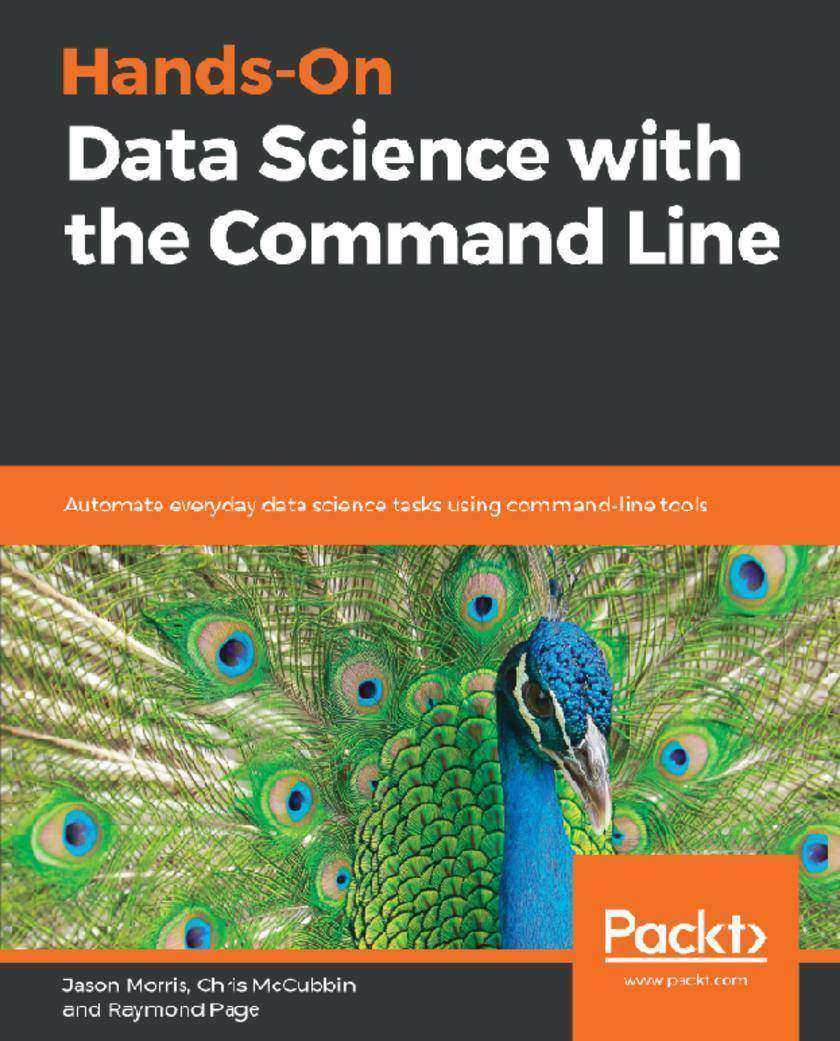
Hands-On Data Science with the Command Line
¥54.49
Big data processing and analytics at speed and scale using command line tools. Key Features * Perform string processing, numerical computations, and more using CLI tools * Understand the essential components of data science development workflow * Automate data pipeline scripts and visualization with the command line Book Description The Command Line has been in existence on UNIX-based OSes in the form of Bash shell for over 3 decades. However, very little is known to developers as to how command-line tools can be OSEMN (pronounced as awesome and standing for Obtaining, Scrubbing, Exploring, Modeling, and iNterpreting data) for carrying out simple-to-advanced data science tasks at speed. This book will start with the requisite concepts and installation steps for carrying out data science tasks using the command line. You will learn to create a data pipeline to solve the problem of working with small-to medium-sized files on a single machine. You will understand the power of the command line, learn how to edit files using a text-based and an. You will not only learn how to automate jobs and scripts, but also learn how to visualize data using the command line. By the end of this book, you will learn how to speed up the process and perform automated tasks using command-line tools. What you will learn * Understand how to set up the command line for data science * Use AWK programming language commands to search quickly in large datasets. * Work with files and APIs using the command line * Share and collect data with CLI tools * Perform visualization with commands and functions * Uncover machine-level programming practices with a modern approach to data science Who this book is for This book is for data scientists and data analysts with little to no knowledge of the command line but has an understanding of data science. Perform everyday data science tasks using the power of command line tools.
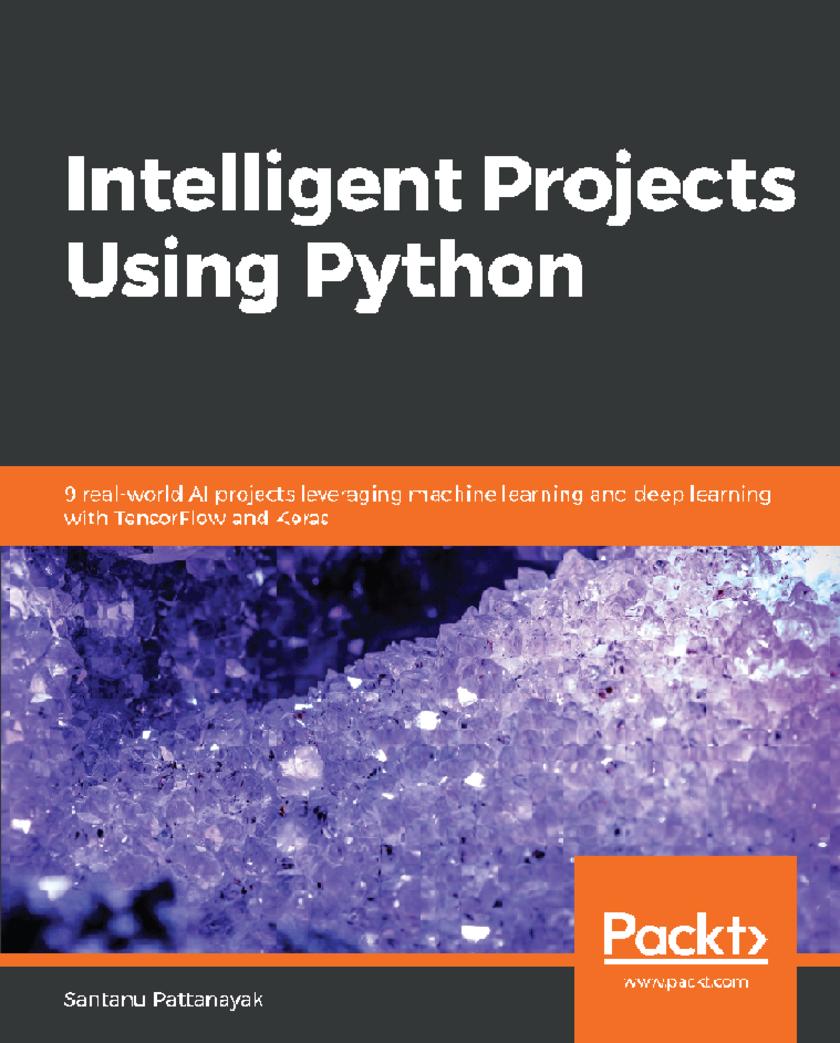
Intelligent Projects Using Python
¥73.02
Implement machine learning and deep learning methodologies to build smart, cognitive AI projects using Python Key Features * A go-to guide to help you master AI algorithms and concepts * 8 real-world projects tackling different challenges in healthcare, e-commerce, and surveillance * Use TensorFlow, Keras, and other Python libraries to implement smart AI applications Book Description This book will be a perfect companion if you want to build insightful projects from leading AI domains using Python. The book covers detailed implementation of projects from all the core disciplines of AI. We start by covering the basics of how to create smart systems using machine learning and deep learning techniques. You will assimilate various neural network architectures such as CNN, RNN, LSTM, to solve critical new world challenges. You will learn to train a model to detect diabetic retinopathy conditions in the human eye and create an intelligent system for performing a video-to-text translation. You will use the transfer learning technique in the healthcare domain and implement style transfer using GANs. Later you will learn to build AI-based recommendation systems, a mobile app for sentiment analysis and a powerful chatbot for carrying customer services. You will implement AI techniques in the cybersecurity domain to generate Captchas. Later you will train and build autonomous vehicles to self-drive using reinforcement learning. You will be using libraries from the Python ecosystem such as TensorFlow, Keras and more to bring the core aspects of machine learning, deep learning, and AI. By the end of this book, you will be skilled to build your own smart models for tackling any kind of AI problems without any hassle. What you will learn * Build an intelligent machine translation system using seq-2-seq neural translation machines * Create AI applications using GAN and deploy smart mobile apps using TensorFlow * Translate videos into text using CNN and RNN * Implement smart AI Chatbots, and integrate and extend them in several domains * Create smart reinforcement, learning-based applications using Q-Learning * Break and generate CAPTCHA using Deep Learning and Adversarial Learning Who this book is for This book is intended for data scientists, machine learning professionals, and deep learning practitioners who are ready to extend their knowledge and potential in AI. If you want to build real-life smart systems to play a crucial role in every complex domain, then this book is what you need. Knowledge of Python programming and a familiarity with basic machine learning and deep learning concepts are expected to help you get the most out of the book
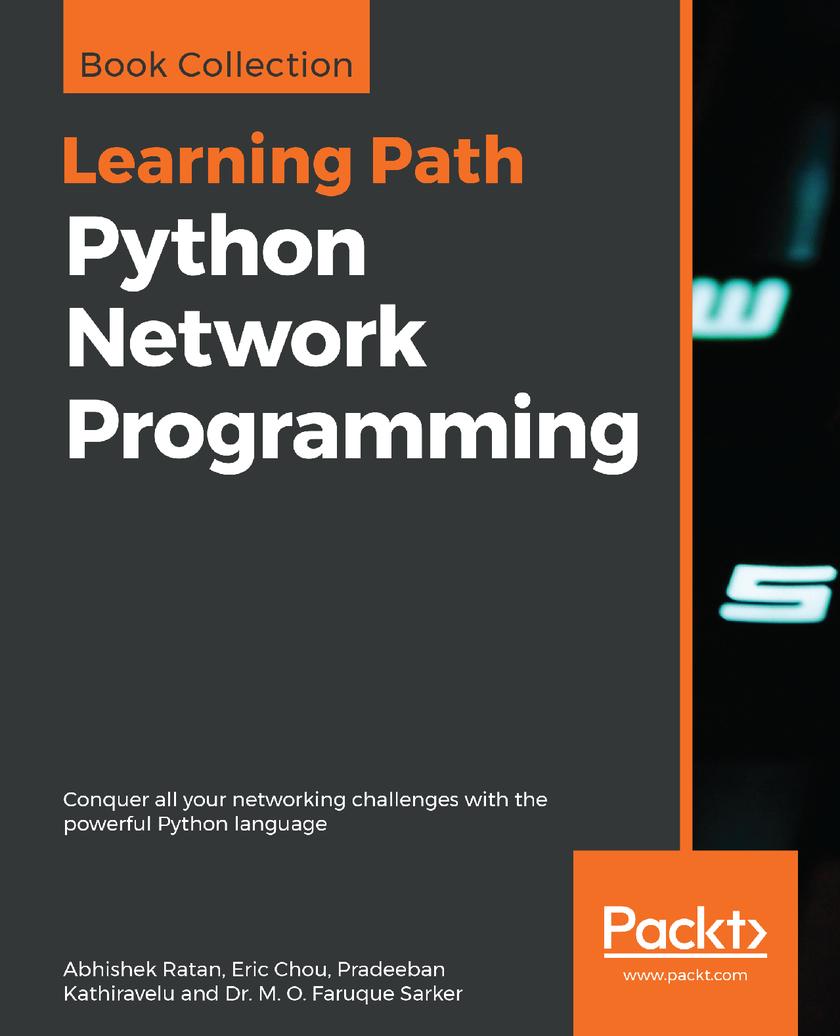
Python Network Programming
¥90.46
Power up your network applications with Python programming Key Features * Master Python skills to develop powerful network applications * Grasp the fundamentals and functionalities of SDN * Design multi-threaded, event-driven architectures for echo and chat servers Book Description This Learning Path highlights major aspects of Python network programming such as writing simple networking clients, creating and deploying SDN and NFV systems, and extending your network with Mininet. You’ll also learn how to automate legacy and the latest network devices. As you progress through the chapters, you’ll use Python for DevOps and open source tools to test, secure, and analyze your network. Toward the end, you'll develop client-side applications, such as web API clients, email clients, SSH, and FTP, using socket programming. By the end of this Learning Path, you will have learned how to analyze a network's security vulnerabilities using advanced network packet capture and analysis techniques. This Learning Path includes content from the following Packt products: * Practical Network Automation by Abhishek Ratan * Mastering Python Networking by Eric Chou * Python Network Programming Cookbook, Second Edition by Pradeeban Kathiravelu, Dr. M. O. Faruque Sarker What you will learn * Create socket-based networks with asynchronous models * Develop client apps for web APIs, including S3 Amazon and Twitter * Talk to email and remote network servers with different protocols * Integrate Python with Cisco, Juniper, and Arista eAPI for automation * Use Telnet and SSH connections for remote system monitoring * Interact with websites via XML-RPC, SOAP, and REST APIs * Build networks with Ryu, OpenDaylight, Floodlight, ONOS, and POX * Configure virtual networks in different deployment environments Who this book is for If you are a Python developer or a system administrator who wants to start network programming, this Learning Path gets you a step closer to your goal. IT professionals and DevOps engineers who are new to managing network devices or those with minimal experience looking to expand their knowledge and skills in Python will also find this Learning Path useful. Although prior knowledge of networking is not required, some experience in Python programming will be helpful for a better understanding of the concepts in the Learning Path.
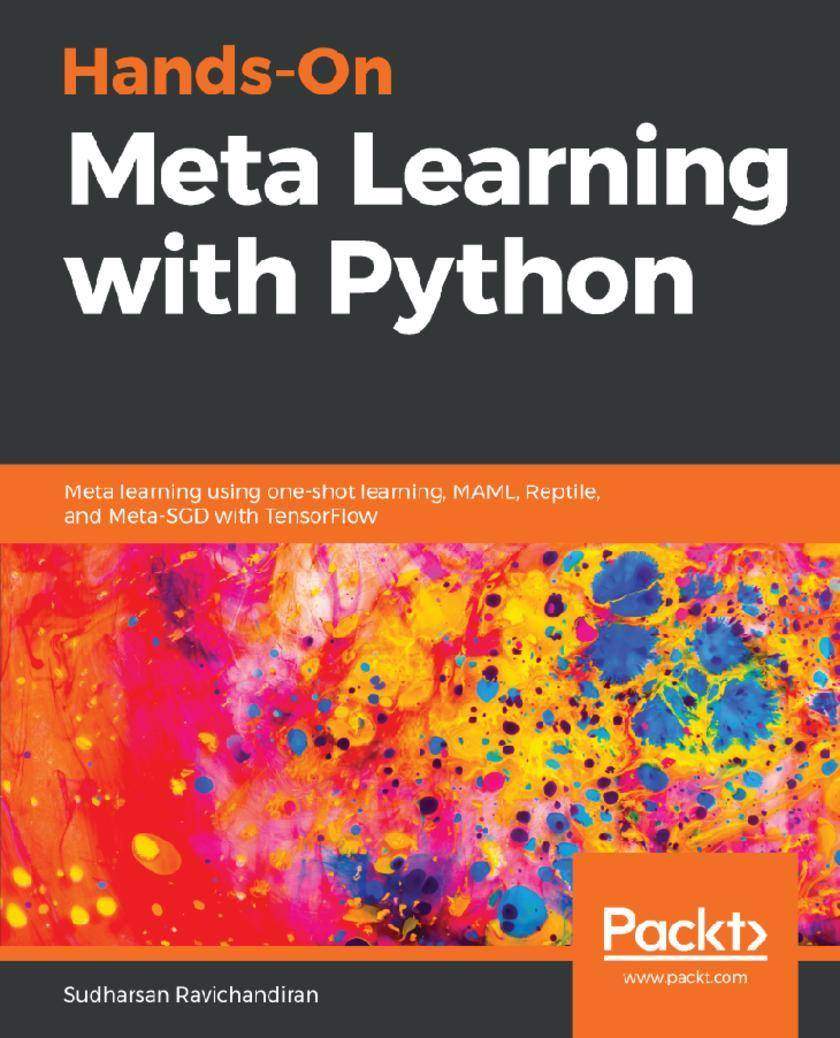
Hands-On Meta Learning with Python
¥71.93
Explore a diverse set of meta-learning algorithms and techniques to enable human-like cognition for your machine learning models using various Python frameworks Key Features *Understand the foundations of meta learning algorithms *Explore practical examples to explore various one-shot learning algorithms with its applications in TensorFlow *Master state of the art meta learning algorithms like MAML, reptile, meta SGD Book Description Meta learning is an exciting research trend in machine learning, which enables a model to understand the learning process. Unlike other ML paradigms, with meta learning you can learn from small datasets faster. Hands-On Meta Learning with Python starts by explaining the fundamentals of meta learning and helps you understand the concept of learning to learn. You will delve into various one-shot learning algorithms, like siamese, prototypical, relation and memory-augmented networks by implementing them in TensorFlow and Keras. As you make your way through the book, you will dive into state-of-the-art meta learning algorithms such as MAML, Reptile, and CAML. You will then explore how to learn quickly with Meta-SGD and discover how you can perform unsupervised learning using meta learning with CACTUs. In the concluding chapters, you will work through recent trends in meta learning such as adversarial meta learning, task agnostic meta learning, and meta imitation learning. By the end of this book, you will be familiar with state-of-the-art meta learning algorithms and able to enable human-like cognition for your machine learning models. What you will learn *Understand the basics of meta learning methods, algorithms, and types *Build voice and face recognition models using a siamese network *Learn the prototypical network along with its variants *Build relation networks and matching networks from scratch *Implement MAML and Reptile algorithms from scratch in Python *Work through imitation learning and adversarial meta learning *Explore task agnostic meta learning and deep meta learning Who this book is for Hands-On Meta Learning with Python is for machine learning enthusiasts, AI researchers, and data scientists who want to explore meta learning as an advanced approach for training machine learning models. Working knowledge of machine learning concepts and Python programming is necessary.
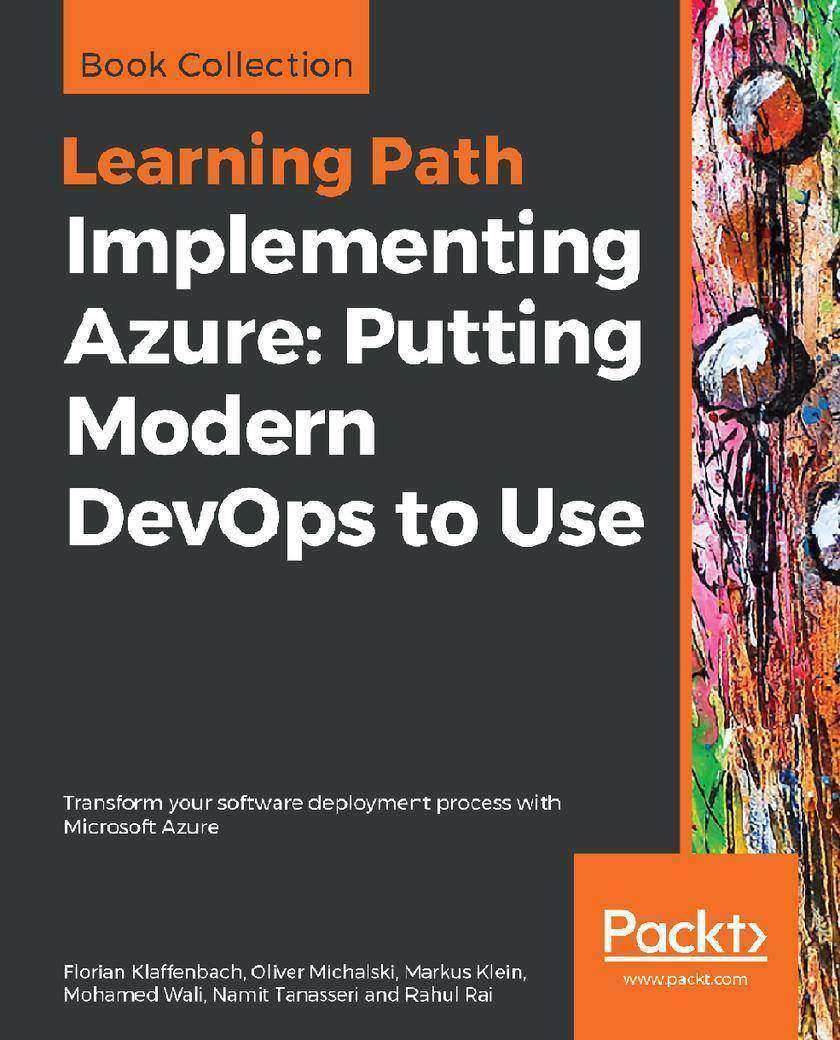
Implementing Azure: Putting Modern DevOps to Use
¥90.46
Explore powerful Azure DevOps solutions to develop and deploy your software faster and more efficiently. Key Features * Build modern microservice-based systems with Azure architecture * Learn to deploy and manage cloud services and virtual machines * Configure clusters with Azure Service Fabric for deployment Book Description This Learning Path helps you understand microservices architecture and leverage various services of Microsoft Azure Service Fabric to build, deploy, and maintain highly scalable enterprise-grade applications. You will learn to select an appropriate Azure backend structure for your solutions and work with its toolkit and managed apps to share your solutions with its service catalog. As you progress through the Learning Path, you will study Azure Cloud Services, Azure-managed Kubernetes, and Azure Container Services deployment techniques. To apply all that you’ve understood, you will build an end-to-end Azure system in scalable, decoupled tiers for an industrial bakery with three business domains. Toward the end of this Learning Path, you will build another scalable architecture using Azure Service Bus topics to send orders between decoupled business domains with scalable worker roles processing these orders. By the end of this Learning Path, you will be comfortable in using development, deployment, and maintenance processes to build robust cloud solutions on Azure. This Learning Path includes content from the following Packt products: * Learn Microsoft Azure by Mohamed Wali * Implementing Azure Solutions - Second Edition by Florian Klaffenbach, Oliver Michalski, Markus Klein * Microservices with Azure by Namit Tanasseri and Rahul Rai What you will learn * Study various Azure Service Fabric application programming models * Create and manage a Kubernetes cluster in Azure Kubernetes Service * Use site-to-site VPN and ExpressRoute connections in your environment * Design an Azure IoT app and learn to operate it in various scenarios * Implement a hybrid Azure design using Azure Stack * Build Azure SQL databases with Code First Migrations * Integrate client applications with Web API and SignalR on Azure * Implement the Azure Active Directory (Azure AD) across the entire system Who this book is for If you are an IT system architect, network admin, or a DevOps engineer who wants to implement Azure solutions for your organization, this Learning Path is for you. Basic knowledge of the Azure Cloud platform will be beneficial.
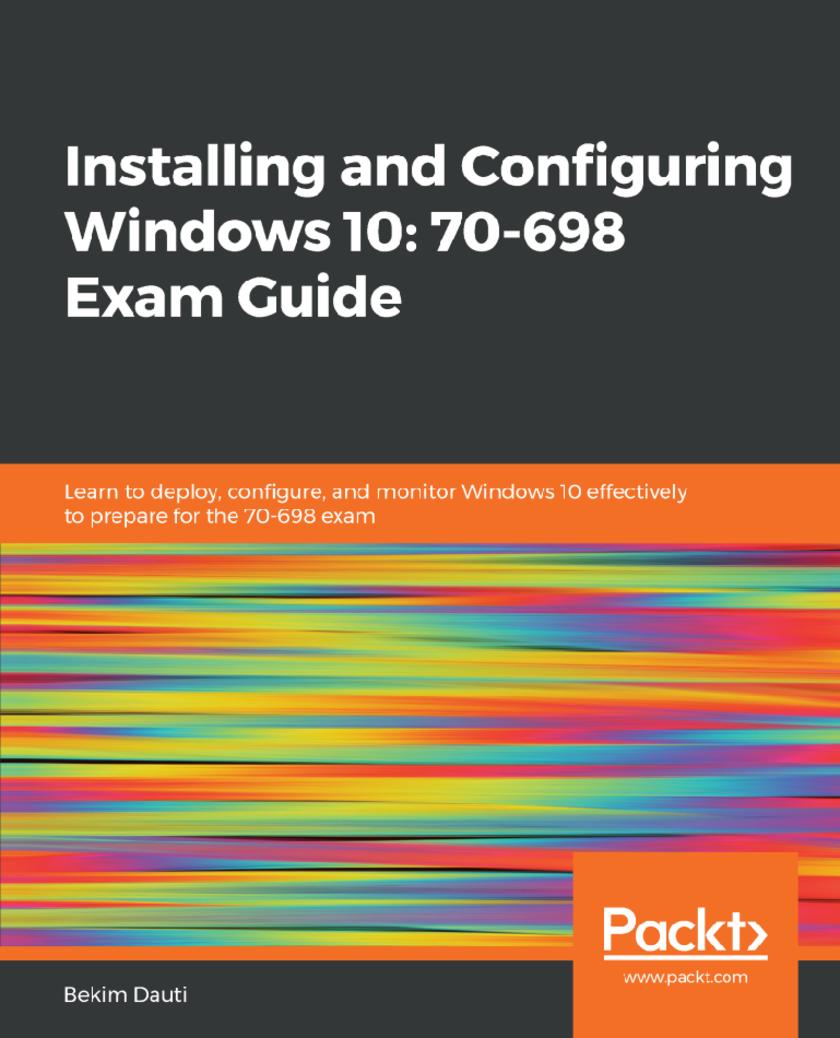
Installing and Configuring Windows 10: 70-698 Exam Guide
¥73.02
Get ready for the Windows 10: 70-698 exam and configure Windows to manage data recovery Key Features * Implement Windows 10 operational and administrative tasks * Configure devices, remote management settings, advanced management tools, and device drivers * Comprehensive guide to help you work efficiently in Windows 10 Book Description The Installing and Configuring Windows 10: 70-698 Exam Guide is designed to confirm what you already know, while also updating your knowledge of Windows 10. With its easy-to-follow guidance, you will quickly learn the user interface and discover steps to work efficiently in Windows 10 to rule out delays and obstacles. This book begins by covering various ways of installing Windows 10, followed by instructions on post-installation tasks. You will learn about the deployment of Windows 10 in Enterprise and also see how to configure networking in Windows 10. You’ll understand how to leverage Disk Management and Windows PowerShell to configure disks, volumes, and file system options. As you progress through the chapters, you will be able to set up remote management in Windows 10 and learn more about Windows update usage, behavior, and settings. You will also gain insights that will help you monitor and manage data recovery and explore how to configure authentication, authorization, and advanced management tools in Windows 10. By the end of this book, you will be equipped with enough knowledge to take the 70-698 exam and explore different study methods to improve your chances of passing the exam with ease. What you will learn * Discover various ways of installing Windows 10 * Understand how to configure devices and device drivers * Configure and support IPv4 and IPv6 network settings * Troubleshoot storage and removable device issues * Get to grips with data access and usage * Explore the advanced management tools available in Windows 10 Who this book is for This book is for IT professionals who perform installation, configuration, general local management and maintenance of Windows 10 core services and are preparing to clear the Windows 10: 70-698 exam
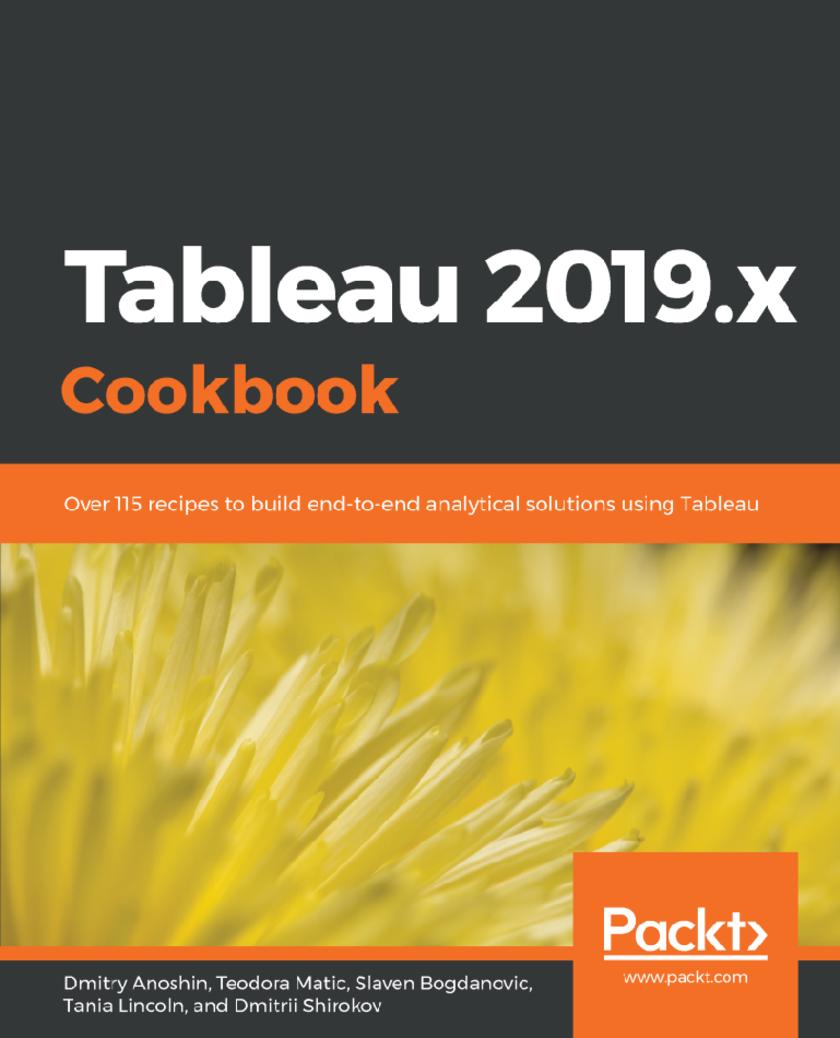
Tableau 2019.x Cookbook
¥90.46
Perform advanced dashboard, visualization, and analytical techniques with Tableau Desktop, Tableau Prep, and Tableau Server Key Features * Unique problem-solution approach to aid effective business decision-making * Create interactive dashboards and implement powerful business intelligence solutions * Includes best practices on using Tableau with modern cloud analytics services Book Description Tableau has been one of the most popular business intelligence solutions in recent times, thanks to its powerful and interactive data visualization capabilities. Tableau 2019.x Cookbook is full of useful recipes from industry experts, who will help you master Tableau skills and learn each aspect of Tableau's ecosystem. This book is enriched with features such as Tableau extracts, Tableau advanced calculations, geospatial analysis, and building dashboards. It will guide you with exciting data manipulation, storytelling, advanced filtering, expert visualization, and forecasting techniques using real-world examples. From basic functionalities of Tableau to complex deployment on Linux, you will cover it all. Moreover, you will learn advanced features of Tableau using R, Python, and various APIs. You will learn how to prepare data for analysis using the latest Tableau Prep. In the concluding chapters, you will learn how Tableau fits the modern world of analytics and works with modern data platforms such as Snowflake and Redshift. In addition, you will learn about the best practices of integrating Tableau with ETL using Matillion ETL. By the end of the book, you will be ready to tackle business intelligence challenges using Tableau's features. What you will learn * Understand the basic and advanced skills of Tableau Desktop * Implement best practices of visualization, dashboard, and storytelling * Learn advanced analytics with the use of build in statistics * Deploy the multi-node server on Linux and Windows * Use Tableau with big data sources such as Hadoop, Athena, and Spectrum * Cover Tableau built-in functions for forecasting using R packages * Combine, shape, and clean data for analysis using Tableau Prep * Extend Tableau’s functionalities with REST API and R/Python Who this book is for Tableau 2019.x Cookbook is for data analysts, data engineers, BI developers, and users who are looking for quick solutions to common and not-so-common problems faced while using Tableau products. Put each recipe into practice by bringing the latest offerings of Tableau 2019.x to solve real-world analytics and business intelligence challenges. Some understanding of BI concepts and Tableau is required.
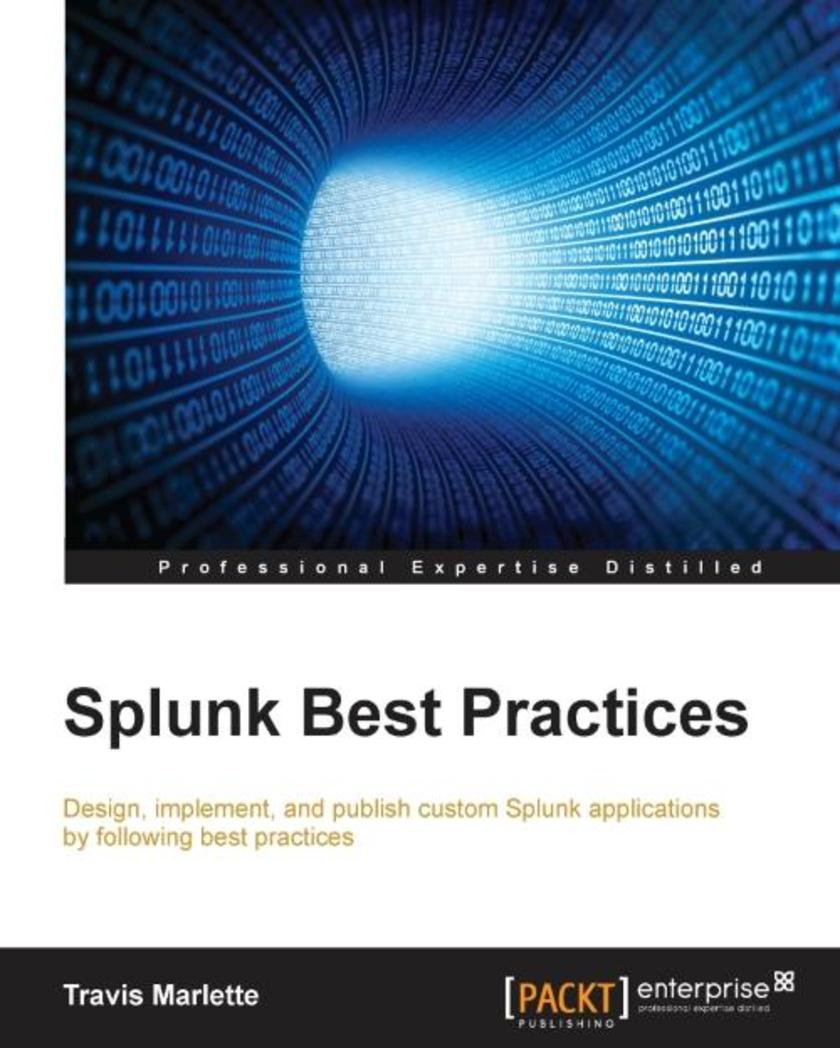
Splunk Best Practices
¥80.65
Design, implement, and publish custom Splunk applications by following best practices About This Book This is the most up-to-date guide on the market and will help you finish your tasks faster, easier, and more efficiently. Highly practical guide that addresses common and not-so-common pain points in Splunk. Want to explore shortcuts to perform tasks more efficiently with SplunkThis is the book for you! Who This Book Is For This book is for administrators, developers, and search ninjas who have been using Splunk for some time. A comprehensive coverage makes this book great for Splunk veterans and newbies alike. What You Will Learn Use Splunk effectively to gather, analyze, and report on operational data throughout your environment Expedite your reporting, and be empowered to present data in a meaningful way Create robust searches, reports, and charts using Splunk Modularize your programs for better reusability. Build your own Splunk apps and learn why they are important Learn how to integrate with enterprise systems Summarize data for longer term trending, reporting, and analysis In Detail This book will give you an edge over others through insights that will help you in day-to-day instances. When you're working with data from various sources in Splunk and performing analysis on this data, it can be a bit tricky. With this book, you will learn the best practices of working with Splunk. You'll learn about tools and techniques that will ease your life with Splunk, and will ultimately save you time. In some cases, it will adjust your thinking of what Splunk is, and what it can and cannot do. To start with, you'll get to know the best practices to get data into Splunk, analyze data, and package apps for distribution. Next, you'll discover the best practices in logging, operations, knowledge management, searching, and reporting. To finish off, we will teach you how to troubleshoot Splunk searches, as well as deployment, testing, and development with Splunk. Style and approach If you're stuck or want to find a better way to work with Splunk environment, this book will come handy. This easy-to-follow, insightful book contains step-by-step instructions and examples and scenarios that you will connect to.
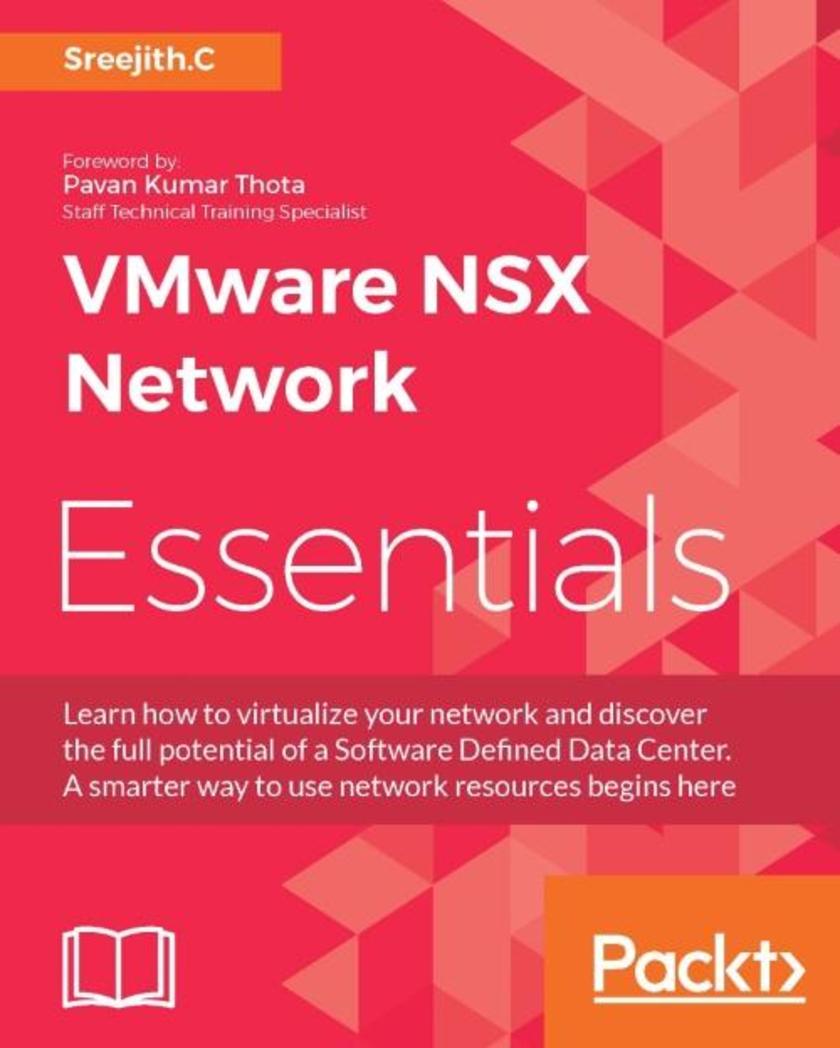
VMware NSX Network Essentials
¥80.65
Learn how to virtualize your network and discover the full potential of a Software Defined Data Center. A smarter way to use network resources begins here About This Book Experience the dynamism and flexibility of a virtualized software defined data center with NSX Find out how to design your network infrastructure based on what your organization needs From security to automation, discover how NSX’s impressive range of features can unlock a more effective and intelligent approach to system administration Who This Book Is For If you’re a network administrator and want a simple but powerful solution to your network virtualization headaches, look no further than this fast-paced, practical guide. What You Will Learn Deep dive into NSX-v Manager, Controller deployment, and design decisions Get to know the strategies needed to make decisions on each mode of VXLAN that is based on physical network design Deploy Edge Gateway and leverage all the gateway features and design decisions Get to grips with NSX-v Security features and automate security Leverage Cross VC, identify the benefits, and work through a few deployment scenarios Troubleshoot an NSX-v to isolate problems and identify solutions through a step-by-step process In Detail VMware NSX is at the forefront of the software-defined networking revolution. It makes it even easier for organizations to unlock the full benefits of a software-defined data center – scalability, flexibility – while adding in vital security and automation features to keep any sysadmin happy. Software alone won’t power your business – with NSX you can use it more effectively than ever before, optimizing your resources and reducing costs. Getting started should be easy – this guide makes sure it is. It takes you through the core components of NSX, demonstrating how to set it up, customize it within your current network architecture. You’ll learn the principles of effective design, as well as some things you may need to take into consideration when you’re creating your virtual networks. We’ll also show you how to construct and maintain virtual networks, and how to deal with any tricky situations and failures. By the end, you’ll be confident you can deliver, scale and secure an exemplary virtualized network with NSX. Style and approach This book provides you with an introduction to software-defined networking with VMware NSX. Focusing on the most essential elements, so you can put your knowledge into practice quickly, it’s a guide dedicated to anyone who understands that sometimes real-world problems require virtualized solutions.
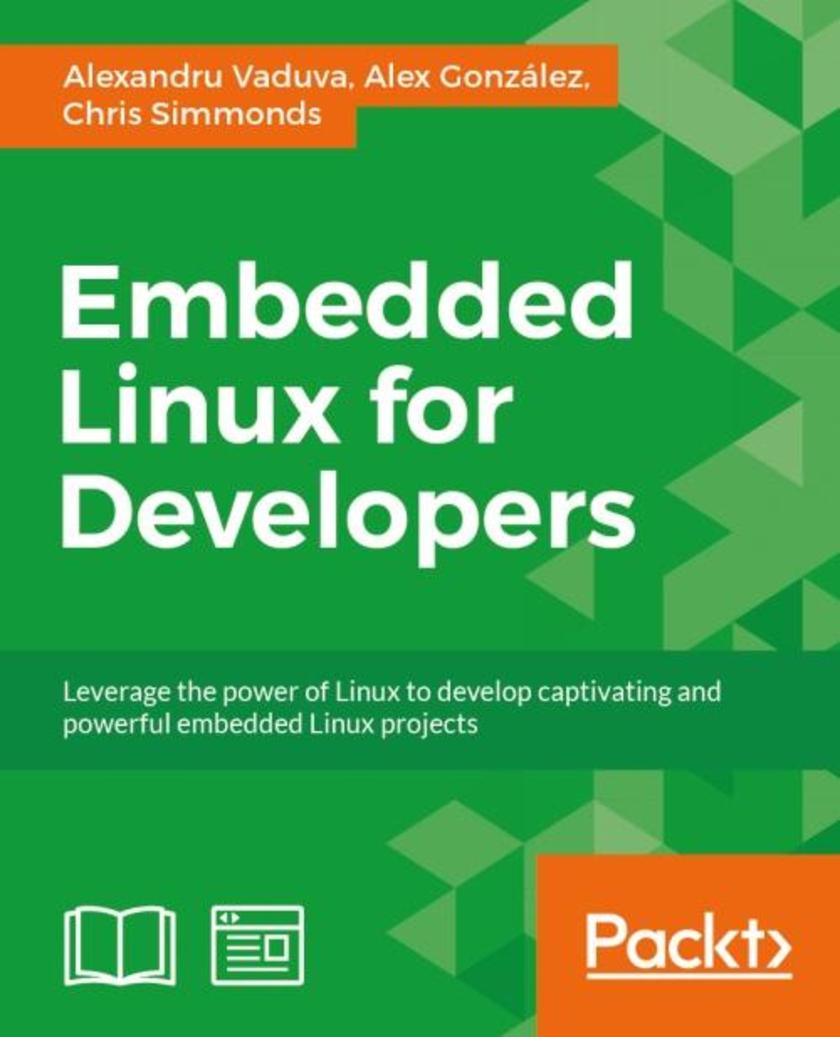
Embedded Linux for Developers
¥179.84
Leverage the power of Linux to develop captivating and powerful embedded Linux projects About This Book Explore the best practices for all embedded product development stages Learn about the compelling features offered by the Yocto Project, such as customization, virtualization, and many more Minimize project costs by using open source tools and programs Who This Book Is For If you are a developer who wants to build embedded systems using Linux, this book is for you. It is the ideal guide for you if you want to become proficient and broaden your knowledge. A basic understanding of C programming and experience with systems programming is needed. Experienced embedded Yocto developers will find new insight into working methodologies and ARM specific development competence. What You Will Learn Use the Yocto Project in the embedded Linux development process Get familiar with and customize the bootloader for a board Discover more about real-time layer, security, virtualization, CGL, and LSB See development workflows for the U-Boot and the Linux kernel, including debugging and optimization Understand the open source licensing requirements and how to comply with them when cohabiting with proprietary programs Optimize your production systems by reducing the size of both the Linux kernel and root filesystems Understand device trees and make changes to accommodate new hardware on your device Design and write multi-threaded applications using POSIX threads Measure real-time latencies and tune the Linux kernel to minimize them In Detail Embedded Linux is a complete Linux distribution employed to operate embedded devices such as smartphones, tablets, PDAs, set-top boxes, and many more. An example of an embedded Linux distribution is Android, developed by Google. This learning path starts with the module Learning Embedded Linux Using the Yocto Project. It introduces embedded Linux software and hardware architecture and presents information about the bootloader. You will go through Linux kernel features and source code and get an overview of the Yocto Project components available. The next module Embedded Linux Projects Using Yocto Project Cookbook takes you through the installation of a professional embedded Yocto setup, then advises you on best practices. Finally, it explains how to quickly get hands-on with the Freescale ARM ecosystem and community layer using the affordable and open source Wandboard embedded board. Moving ahead, the final module Mastering Embedded Linux Programming takes you through the product cycle and gives you an in-depth de*ion of the components and options that are available at each stage. You will see how functions are split between processes and the usage of POSIX threads. By the end of this learning path, your capabilities will be enhanced to create robust and versatile embedded projects. This Learning Path combines some of the best that Packt has to offer in one complete, curated package. It includes content from the following Packt products: Learning Embedded Linux Using the Yocto Project by Alexandru Vaduva Embedded Linux Projects Using Yocto Project Cookbook by Alex González Mastering Embedded Linux Programming by Chris Simmonds Style and approach This comprehensive, step-by-step, pragmatic guide enables you to build custom versions of Linux for new embedded systems with examples that are immediately applicable to your embedded developments. Practical examples provide an easy-to-follow way to learn Yocto project development using the best practices and working methodologies. Coupled with hints and best practices, this will help you understand embedded Linux better.
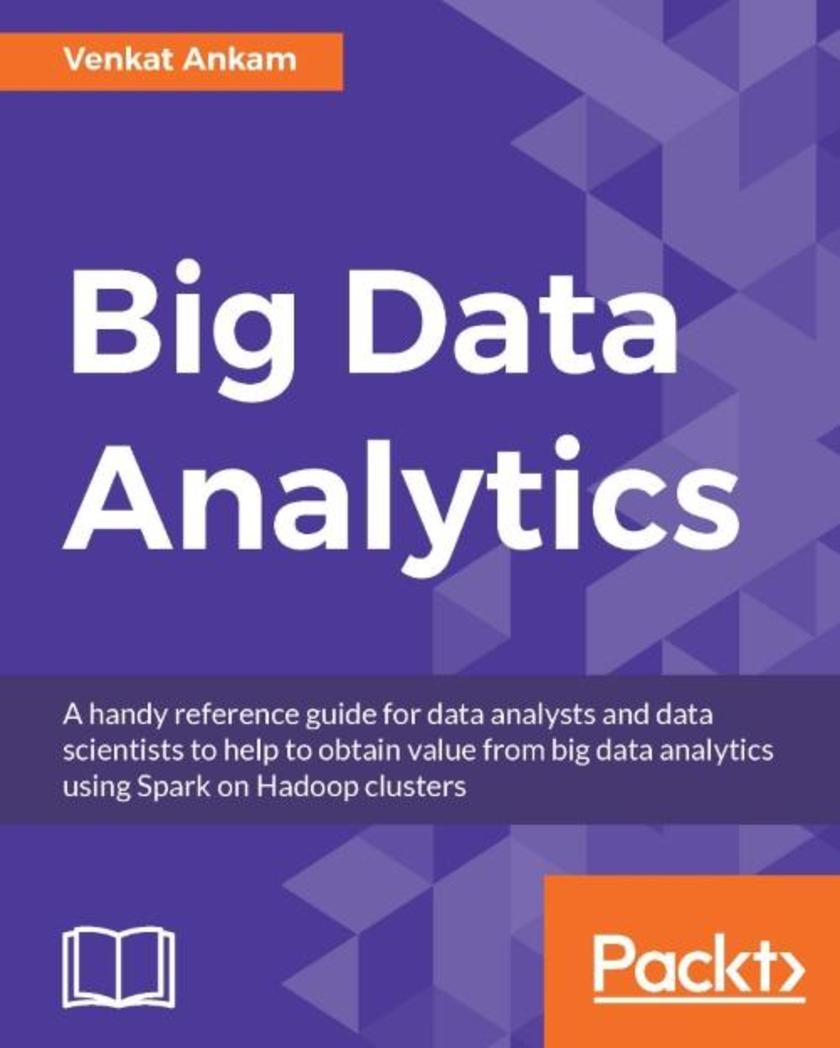
Big Data Analytics
¥90.46
A handy reference guide for data analysts and data scientists to help to obtain value from big data analytics using Spark on Hadoop clusters About This Book This book is based on the latest 2.0 version of Apache Spark and 2.7 version of Hadoop integrated with most commonly used tools. Learn all Spark stack components including latest topics such as DataFrames, DataSets, GraphFrames, Structured Streaming, DataFrame based ML Pipelines and SparkR. Integrations with frameworks such as HDFS, YARN and tools such as Jupyter, Zeppelin, NiFi, Mahout, HBase Spark Connector, GraphFrames, H2O and Hivemall. Who This Book Is For Though this book is primarily aimed at data analysts and data scientists, it will also help architects, programmers, and practitioners. Knowledge of either Spark or Hadoop would be beneficial. It is assumed that you have basic programming background in Scala, Python, SQL, or R programming with basic Linux experience. Working experience within big data environments is not mandatory. What You Will Learn Find out and implement the tools and techniques of big data analytics using Spark on Hadoop clusters with wide variety of tools used with Spark and Hadoop Understand all the Hadoop and Spark ecosystem components Get to know all the Spark components: Spark Core, Spark SQL, DataFrames, DataSets, Conventional and Structured Streaming, MLLib, ML Pipelines and Graphx See batch and real-time data analytics using Spark Core, Spark SQL, and Conventional and Structured Streaming Get to grips with data science and machine learning using MLLib, ML Pipelines, H2O, Hivemall, Graphx, SparkR and Hivemall. In Detail Big Data Analytics book aims at providing the fundamentals of Apache Spark and Hadoop. All Spark components – Spark Core, Spark SQL, DataFrames, Data sets, Conventional Streaming, Structured Streaming, MLlib, Graphx and Hadoop core components – HDFS, MapReduce and Yarn are explored in greater depth with implementation examples on Spark + Hadoop clusters. It is moving away from MapReduce to Spark. So, advantages of Spark over MapReduce are explained at great depth to reap benefits of in-memory speeds. DataFrames API, Data Sources API and new Data set API are explained for building Big Data analytical applications. Real-time data analytics using Spark Streaming with Apache Kafka and HBase is covered to help building streaming applications. New Structured streaming concept is explained with an IOT (Internet of Things) use case. Machine learning techniques are covered using MLLib, ML Pipelines and SparkR and Graph Analytics are covered with GraphX and GraphFrames components of Spark. Readers will also get an opportunity to get started with web based notebooks such as Jupyter, Apache Zeppelin and data flow tool Apache NiFi to analyze and visualize data. Style and approach This step-by-step pragmatic guide will make life easy no matter what your level of experience. You will deep dive into Apache Spark on Hadoop clusters through ample exciting real-life examples. Practical tutorial explains data science in simple terms to help programmers and data analysts get started with Data Science
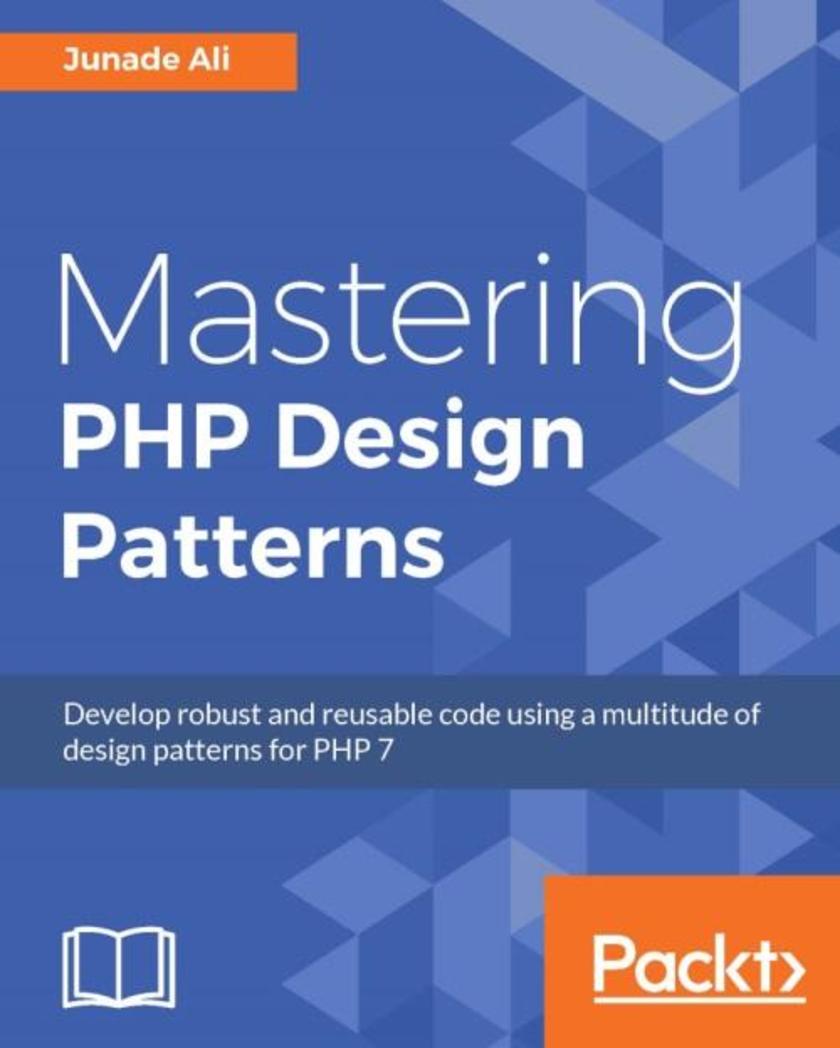
Mastering PHP Design Patterns
¥80.65
Develop robust and reusable code using a multitude of design patterns for PHP 7 About This Book Learn about advanced design patterns in PHP 7 Understand enhanced architectural patterns Learn to implement reusable design patterns to address common recurring problems Who This Book Is For This book is for PHP developers who wish to have better organization structure over their code through learning common methodologies to solve architectural problems against a backdrop of learning new functionality in PHP 7. What You Will Learn Recognize recurring problems in your code with Anti-Patterns Uncover object creation mechanisms using Creational Patterns Use Structural design patterns to easily access your code Address common issues encountered when linking objects using the splObserver classes in PHP 7 Achieve a common style of coding with Architectural Patterns Write reusable code for common MVC frameworks such as Zend, Laravel, and Symfony Get to know the best practices associated with design patterns when used with PHP 7 In Detail Design patterns are a clever way to solve common architectural issues that arise during software development. With an increase in demand for enhanced programming techniques and the versatile nature of PHP, a deep understanding of PHP design patterns is critical to achieve efficiency while coding. This comprehensive guide will show you how to achieve better organization structure over your code through learning common methodologies to solve architectural problems. You’ll also learn about the new functionalities that PHP 7 has to offer. Starting with a brief introduction to design patterns, you quickly dive deep into the three main architectural patterns: Creational, Behavioral, and Structural popularly known as the Gang of Four patterns. Over the course of the book, you will get a deep understanding of object creation mechanisms, advanced techniques that address issues concerned with linking objects together, and improved methods to access your code. You will also learn about Anti-Patterns and the best methodologies to adopt when building a PHP 7 application. With a concluding chapter on best practices, this book is a complete guide that will equip you to utilize design patterns in PHP 7 to achieve maximum productivity, ensuring an enhanced software development experience. Style and approach The book covers advanced design patterns in detail in PHP 7 with the help of rich code-based examples.
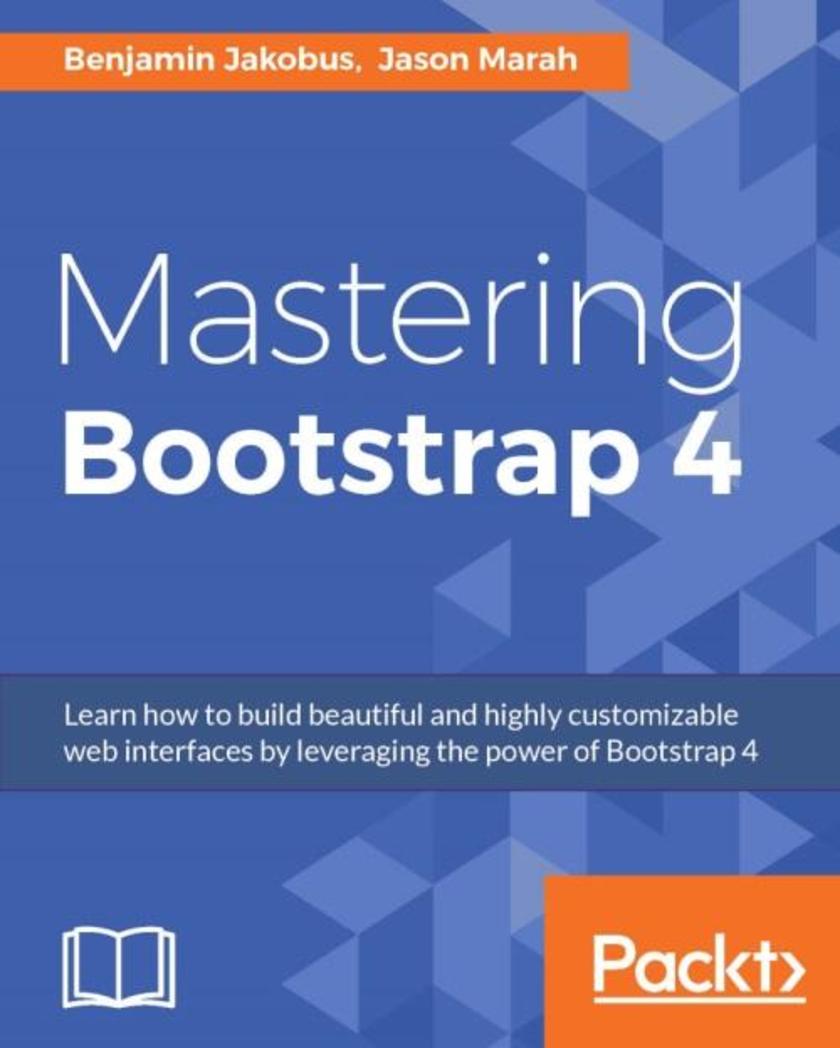
Mastering Bootstrap 4
¥80.65
Learn how to build beautiful and highly customizable web interfaces by leveraging the power of Bootstrap 4 About This Book Adapt and customize Bootstrap to produce enticing websites that fit your needs Explore Bootstrap's grid system, helper classes, and responsive utilities Extend Bootstrap with jQuery plugins and learn how to create your own custom plugins Who This Book Is For This book targets intermediate-level front-end web-developers. The book is not intended to be an introduction to web development. As such, the book assumes that readers have a firm grasp on the basic concepts behind web-development, as well as essential HTML, JavaScript and CSS skills. What You Will Learn Create a professional Bootstrap-based website from scratch without using third-party templates Apply the Bootstrap mobile-first grid system and add responsiveness and aesthetic touches to image elements Style various types of content and learn how to build a page’s layout from scratch by applying the power of Bootstrap 4 Take advantage of Bootstrap’s form helper and contextual classes Infuse your web pages with life and movement using Bootstrap jQuery plugins Customize the behavior and features of Bootstrap’s jQuery Plugins extensively Optimize your Bootstrap-based project before deployment Incorporate Bootstrap into an AngularJS or React application and use Bootstrap components as AngularJS directives or React components In Detail Bootstrap 4 is a free CSS and JavaScript framework that allows developers to rapidly build responsive web-interfaces. Right from the first chapter, dive into building a customized Bootstrap website from scratch. Get to grips with Bootstrap’s key features and quickly discover the various ways in which Bootstrap can help you develop web-interfaces. Then take walk through the fundamental features, such as its grid system, helper classes, and responsive utilities. When you have mastered these, you will discover how to structure page layouts, use forms, style different types of content and utilize Bootstrap’s various navigation components. Among other things, you will also tour the anatomy of a Bootstrap plugin, creating your own custom components and extending Bootstrap using jQuery. Finally, you will discover how to optimize your website and integrate it with third-party frameworks. By the end of this book, you will have a thorough knowledge of the framework’s ins and outs, and be able to build highly customizable and optimized web interfaces. Style and approach This comprehensive step-by-step guide walks you through building a complete website using Bootstrap 4. Each chapter is accompanied by source code and screenshots, and focuses on a distinct set of lessons that are illustrated within the context of a demo project.

Alfresco for Administrators
¥54.49
A fast-paced administrator's guide to Alfresco from the administration, managing, and high-level design perspectives About This Book Understand system capabilities in order to make informed and appropriate decisions about its administration Manage users, groups, email, file systems, and transformer availability using Alfresco Use Alfresco to capture and efficiently manage information about repositories, servers, and statistics Who This Book Is For The target audience would be users with a basic knowledge of Content Management System, and also users who want to understand Alfresco from the administration and high-level design perspectives. What You Will Learn Understand Alfresco's architecture and important building blocks Learn to install Alfresco on various application servers such as Tomcat , JBoss, and WebLogic. Become familiar with various configurations in Alfresco such as databases, filesystems, email, and audits Administrate Alfresco using the Explorer Admin Console, Share Admin Console, and Workflow Admin Console Understand how to integrate LDAP and Active Directory with Alfresco for centralized user management Learn how Alfresco environments can be clustered for high availability Fully understand how Alfresco stores content and easily retrieve any information from Alfresco Monitor and manage Alfresco systems in production In Detail Alfresco is an open source Enterprise Content Management (ECM) system for Windows and Linux-like operating systems. The year-on-year growth of business connections, contacts, and communications is expanding enterprise boundaries more than ever before. Alfresco enables organizations to collaborate more effectively, improve business process efficiency, and ensure information governance. The basic purpose of Alfresco is to help users to capture and manage information in a better way. It helps you capture, organize, and share binary files. This book will cover the basic building blocks of an Alfresco system, how the components fit together, and the information required to build a system architecture. This book will also focus on security aspects of Alfresco. such as authentication, troubleshooting, managing permissions, and so on. It will also focus on managing content and storage, indexing and searches, setting up clustering for high availability, and so forth. Style and approach A step-by-step guide to understanding the Alfresco system and making informed and appropriate decisions about administration.
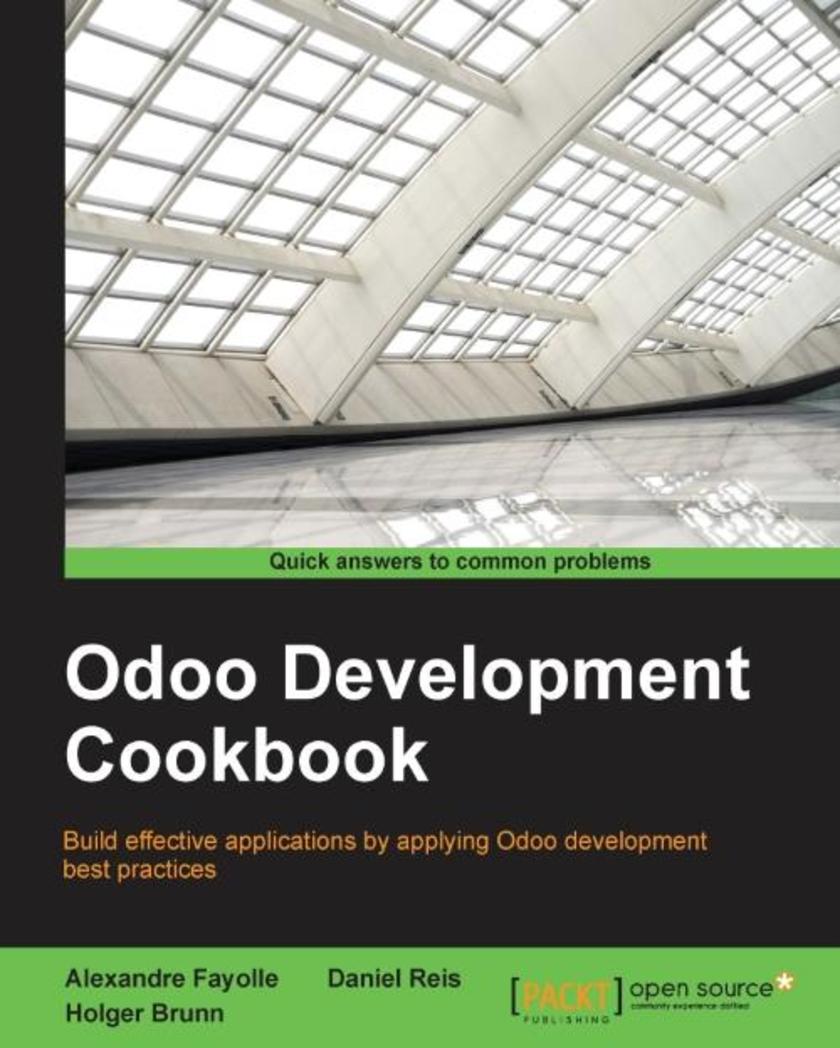
Odoo Development Cookbook
¥90.46
Build effective applications by applying Odoo development best practices About This Book Each recipe stands by itself as much as possible, so that you can jump straight into the topics you prefer The recipes included cover all the major development areas of Odoo and the most important techniques explained through real-life projects From seasoned authors, learn the tricks of becoming a productive developer with the Odoo framework Who This Book Is For If you are a Python developer who wants to learn or consolidate your Odoo development skills, then this book is for you! Some experience with the JavaScript programming language and web development is required to fully benefit from the front-end chapters. What You Will Learn Install and manage Odoo environments and instances Use Models to define your application's data structures Add business logic to your applications Implement automated tests and debug Odoo apps Use back-end views to create a user interface Get to know about the access security model and internationalization features Develop front-end website features Extend the web client with new widgets and features In Detail Odoo is a full-featured open source ERP with a focus on extensibility. The flexibility and sustainability of open source is also a key selling point of Odoo. It is built on a powerful framework for rapid application development, both for back-end applications and front-end websites. The book starts by covering Odoo installation and administration, and provides a gentle introduction to application development. It then dives deep into several of the areas that an experienced developer will need to use. You’ll learn implement business logic, adapt the UI, and extend existing features. Style and Approach These practical and easy-to-follow recipes are presented step-by-step, with dozens of hands-on recipes to boost your Odoo skills. This book can also be used as a reference guide for your daily work.
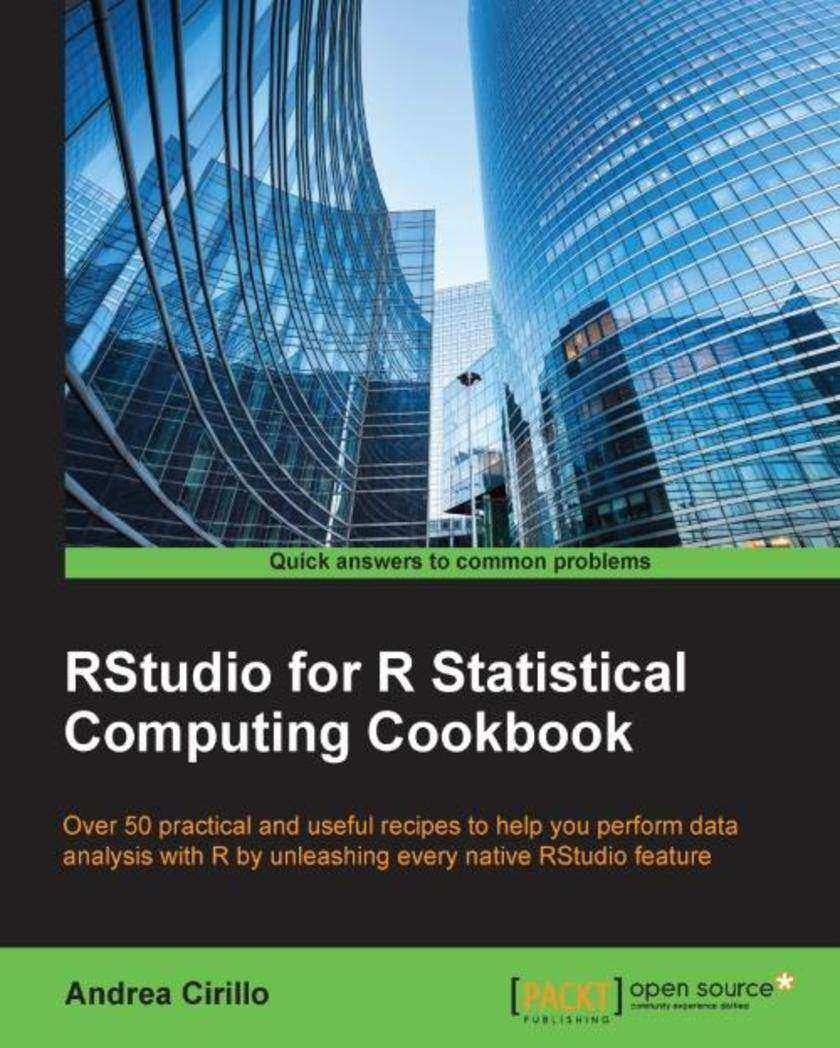
RStudio for R Statistical Computing Cookbook
¥80.65
Over 50 practical and useful recipes to help you perform data analysis with R by unleashing every native RStudio feature About This Book 54 useful and practical tasks to improve working systems Includes optimizing performance and reliability or uptime, reporting, system management tools, interfacing to standard data ports, and so on Offers 10-15 real-life, practical improvements for each user type Who This Book Is For This book is targeted at R statisticians, data scientists, and R programmers. Readers with R experience who are looking to take the plunge into statistical computing will find this Cookbook particularly indispensable. What You Will Learn Familiarize yourself with the latest advanced R console features Create advanced and interactive graphics Manage your R project and project files effectively Perform reproducible statistical analyses in your R projects Use RStudio to design predictive models for a specific domain-based application Use RStudio to effectively communicate your analyses results and even publish them to a blog Put yourself on the frontiers of data science and data monetization in R with all the tools that are needed to effectively communicate your results and even transform your work into a data product In Detail The requirement of handling complex datasets, performing unprecedented statistical analysis, and providing real-time visualizations to businesses has concerned statisticians and analysts across the globe. RStudio is a useful and powerful tool for statistical analysis that harnesses the power of R for computational statistics, visualization, and data science, in an integrated development environment. This book is a collection of recipes that will help you learn and understand RStudio features so that you can effectively perform statistical analysis and reporting, code editing, and R development. The first few chapters will teach you how to set up your own data analysis project in RStudio, acquire data from different data sources, and manipulate and clean data for analysis and visualization purposes. You'll get hands-on with various data visualization methods using ggplot2, and you will create interactive and multidimensional visualizations with D3.js. Additional recipes will help you optimize your code; implement various statistical models to manage large datasets; perform text analysis and predictive analysis; and master time series analysis, machine learning, forecasting; and so on. In the final few chapters, you'll learn how to create reports from your analytical application with the full range of static and dynamic reporting tools that are available in RStudio so that you can effectively communicate results and even transform them into interactive web applications. Style and approach RStudio is an open source Integrated Development Environment (IDE) for the R platform. The R programming language is used for statistical computing and graphics, which RStudio facilitates and enhances through its integrated environment. This Cookbook will help you learn to write better R code using the advanced features of the R programming language using RStudio. Readers will learn advanced R techniques to compute the language and control object evaluation within R functions. Some of the contents are: Accessing an API with R Substituting missing values by interpolation Performing data filtering activities R Statistical implementation for Geospatial data Developing shiny add-ins to expand RStudio functionalities Using GitHub with RStudio Modelling a recommendation engine with R Using R Markdown for static and dynamic reporting Curating a blog through RStudio Advanced statistical modelling with R and RStudio
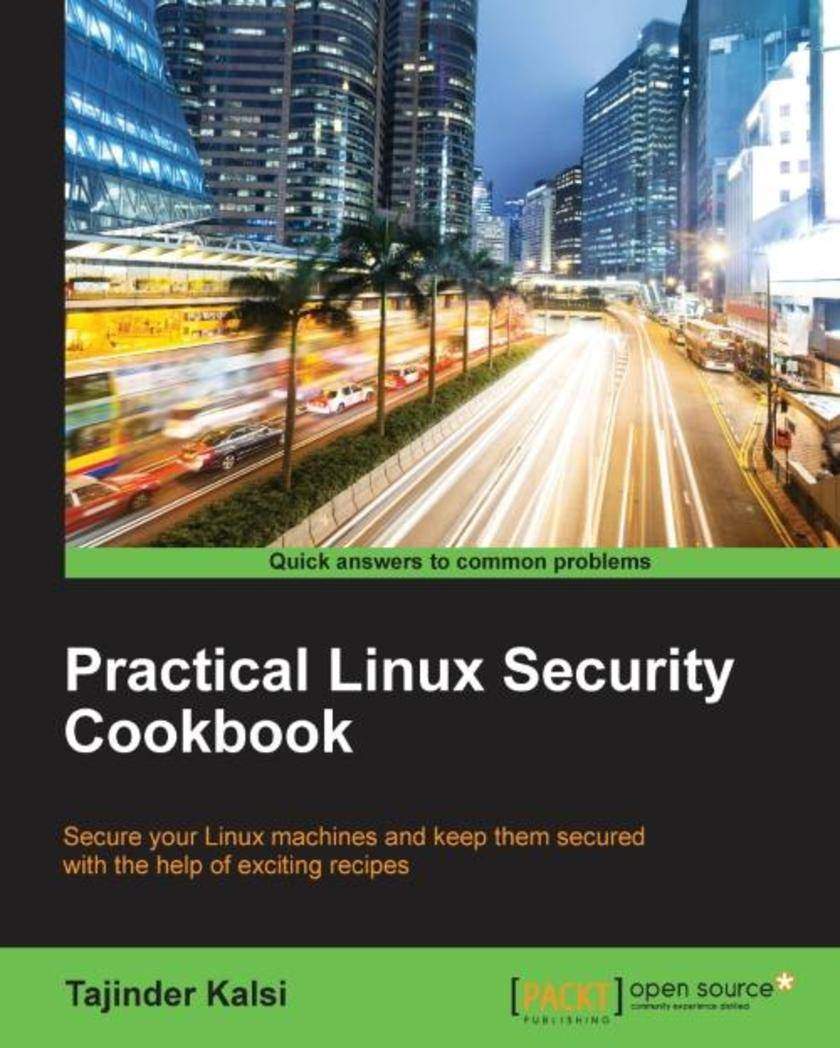
Practical Linux Security Cookbook
¥80.65
Secure your Linux machines and keep them secured with the help of exciting recipes About This Book This book provides code-intensive discussions with detailed recipes that help you understand better and learn faster. More than 50 hands-on recipes to create and administer a secure Linux system locally as well as on a network Enhance file system security and local and remote user authentication by using various security tools and different versions of Linux for different tasks Who This Book Is For Practical Linux Security Cookbook is intended for all those Linux users who already have knowledge of Linux File systems and administration. You should be familiar with basic Linux commands. Understanding Information security and its risks to a Linux system is also helpful in understanding the recipes more easily. However, even if you are unfamiliar with Information security, you will be able to easily follow and understand the recipes discussed. Since Linux Security Cookbook follows a practical approach, following the steps is very easy. What You Will Learn Learn about various vulnerabilities and exploits in relation to Linux systems Configure and build a secure kernel and test it Learn about file permissions and security and how to securely modify files Explore various ways to authenticate local users while monitoring their activities. Authenticate users remotely and securely copy files on remote systems Review various network security methods including firewalls using iptables and TCP Wrapper Explore various security tools including Port Sentry, Squid Proxy, Shorewall, and many more Understand Bash vulnerability/security and patch management In Detail With the growing popularity of Linux, more and more administrators have started moving to the system to create networks or servers for any task. This also makes Linux the first choice for any attacker now. Due to the lack of information about security-related attacks, administrators now face issues in dealing with these attackers as quickly as possible. Learning about the different types of Linux security will help create a more secure Linux system. Whether you are new to Linux administration or experienced, this book will provide you with the skills to make systems more secure. With lots of step-by-step recipes, the book starts by introducing you to various threats to Linux systems. You then get to walk through customizing the Linux kernel and securing local files. Next you will move on to manage user authentication locally and remotely and also mitigate network attacks. Finally, you will learn to patch bash vulnerability and monitor system logs for security. With several screenshots in each example, the book will supply a great learning experience and help you create more secure Linux systems. Style and approach An easy-to-follow cookbook with step-by-step practical recipes covering the various Linux security administration tasks. Each recipe has screenshots, wherever needed, to make understanding more easy.




 购物车
购物车 个人中心
个人中心



